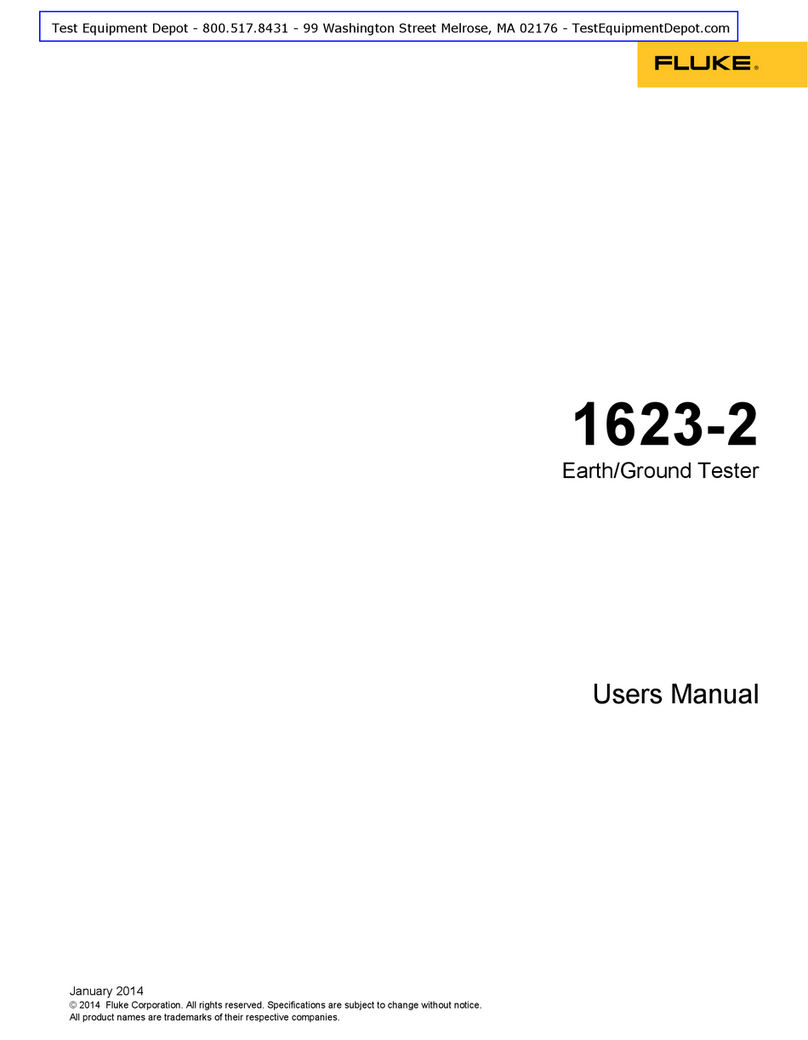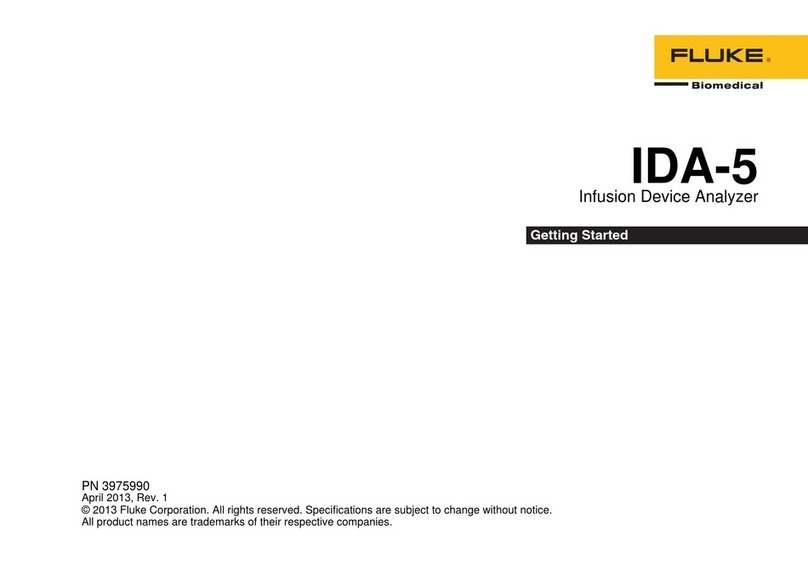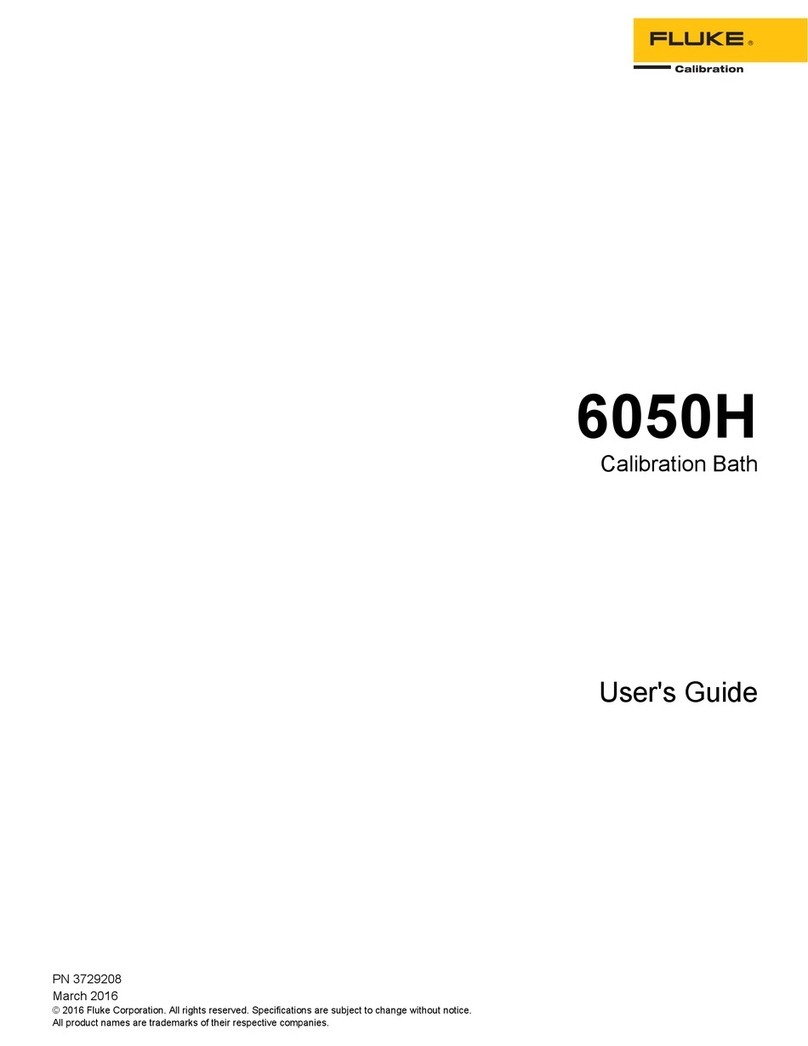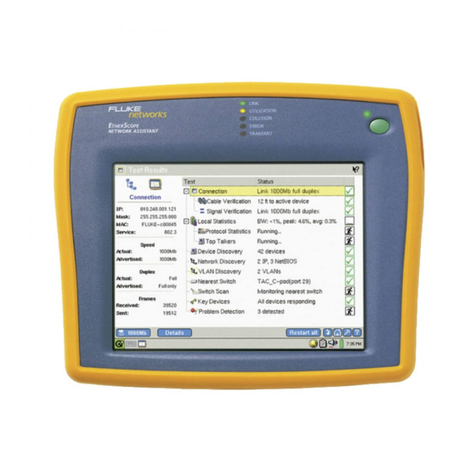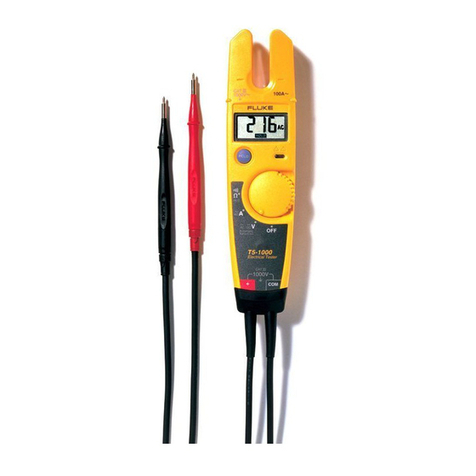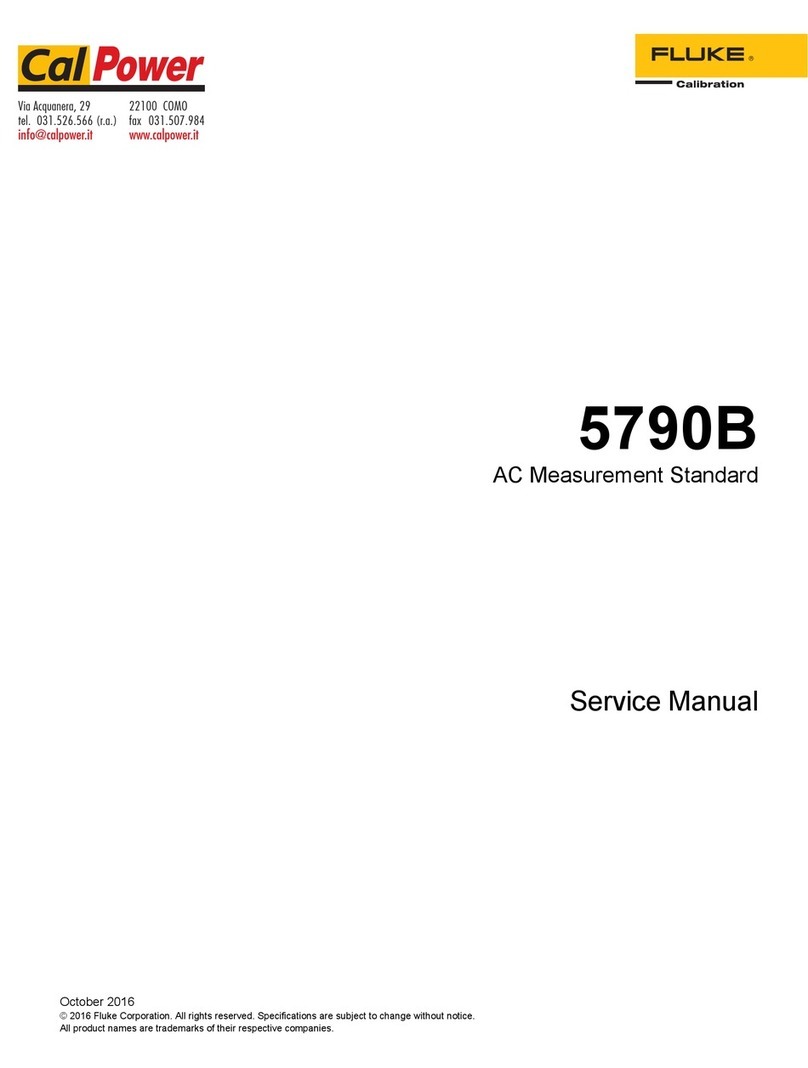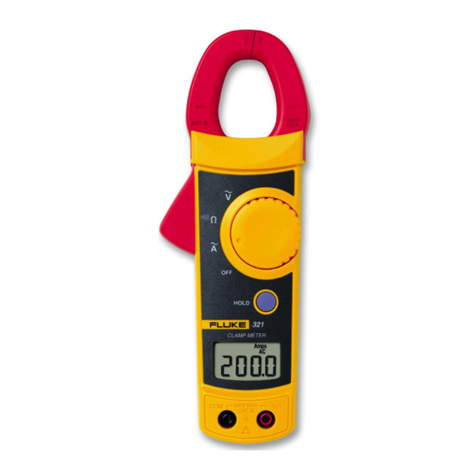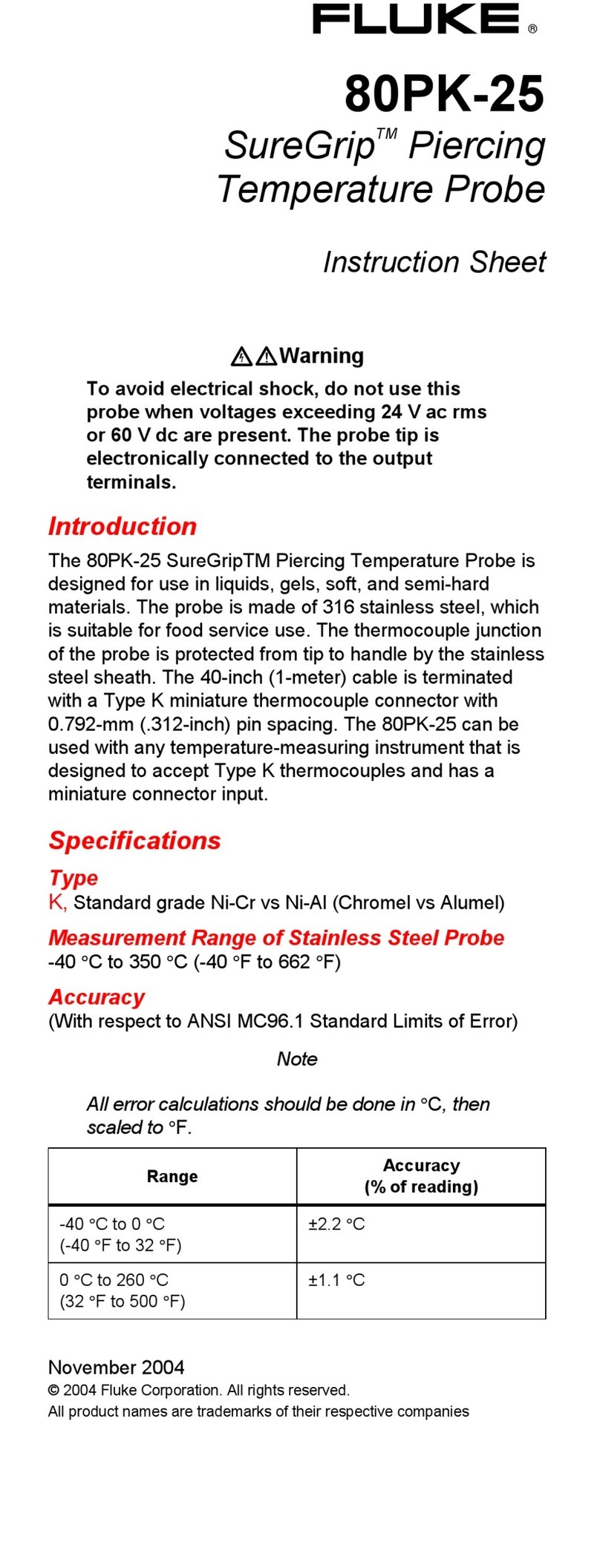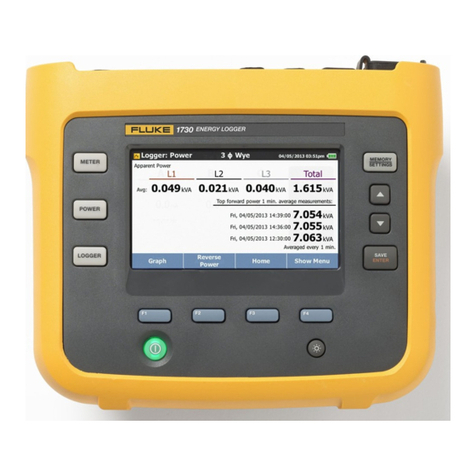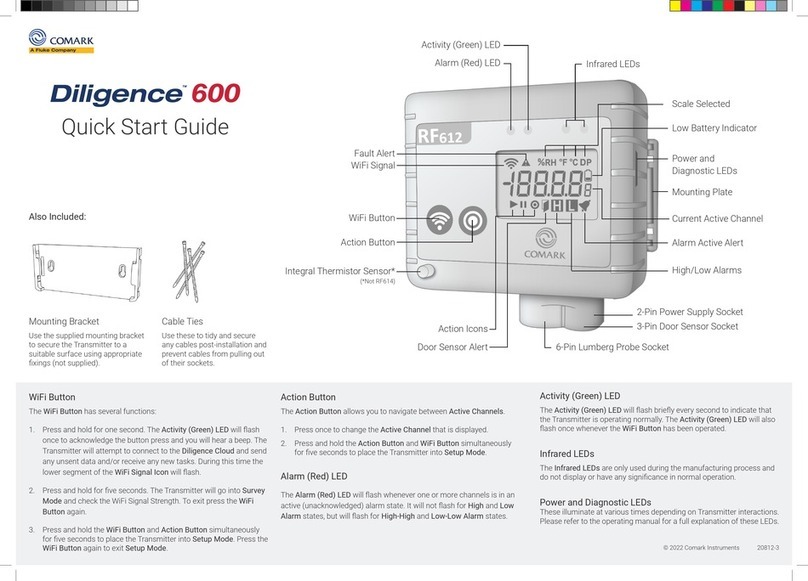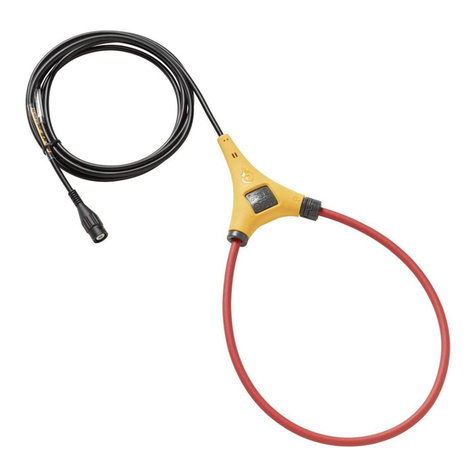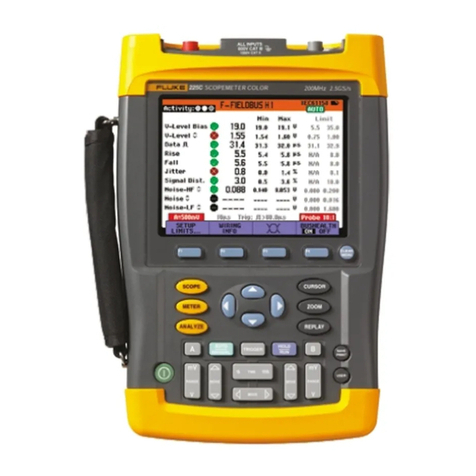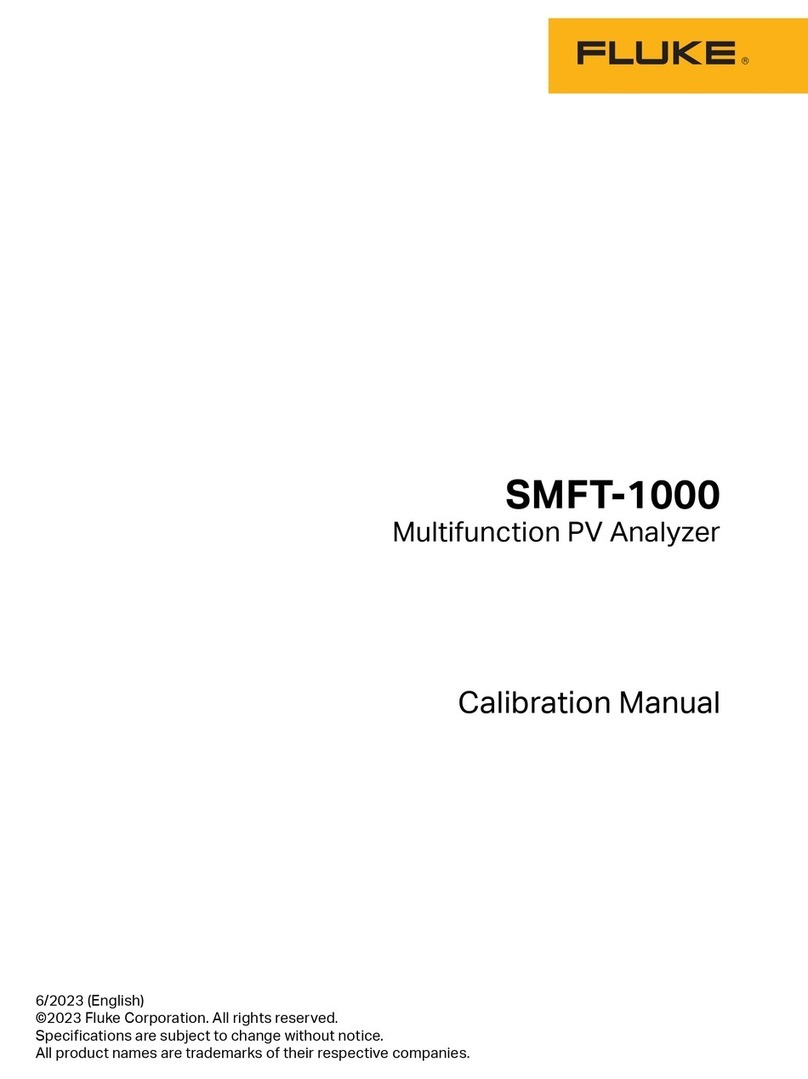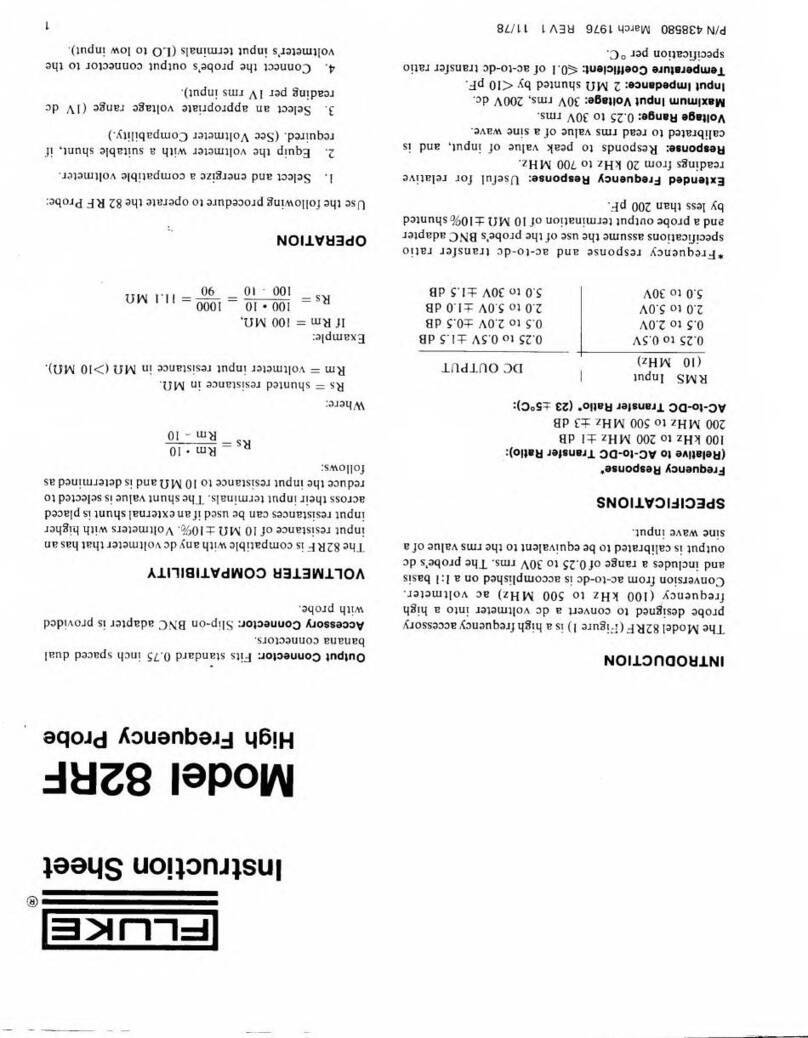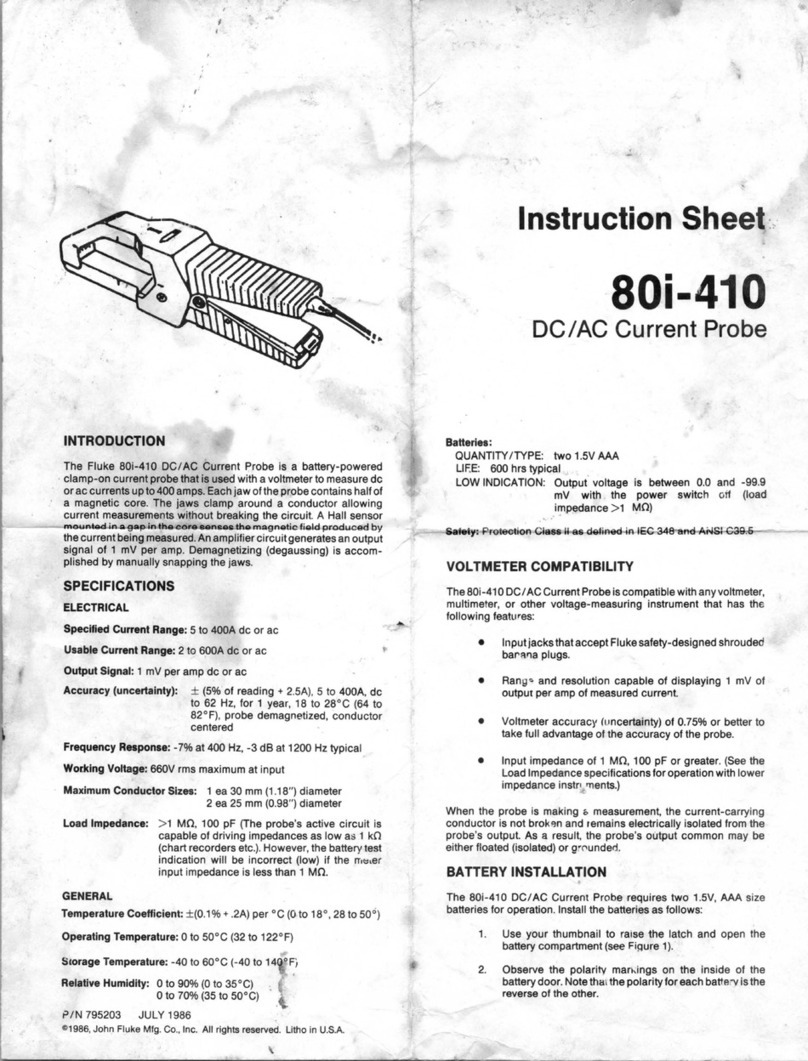
i800 English Instruction Sheet
Page 4
Note
Wire size and the position of the wire within the probe
jaws does not affect measurement accuracy.
4. Multimeter readings displayed in milliamps (mA) can be
read directly as amperes of conductor current. Readings
displayed in amperes (A) must be multiplied times 1000 to
obtain the amperes of conductor current.
CAT
CAT
RANGEHOLD
MINMAX
mA
mA
320 A
Tactile
Barrier
Single
Current Carrying
Conductor
eyd001f.eps
Figure 1. Current Measurement
Meter Readings
When the Clamp is connected to a compatible current meter and
clamped around a single current-carrying conductor, the meter
reading will be one 1000th of the actual current in the conductor. For
example, a 5 A input current will be transformed into a 5 mA output
current (see Figure 1). When measuring current in an ac line cord,
the jaws should be clamped around only one conductor (the black or
hot wire in a three wire cord). If the jaws are clamped around both
current carrying conductors, the currents will cancel and produce a
zero reading. If the probe is clamped around two wires carrying
current in the same direction, the sum will be read. Reversing one of
the wires causes the difference to be read.
Low-Level Current Measurement
The Clamp is specified to measure currents of 100 mA or greater.
Currents less than 100 mA will produce meter readings that are
below the true value. Low-level currents can be measured by
looping the input wire through the jaws so that the sum of the current
through the jaws is greater than 100 mA. The actual current can
then be calculated by dividing the meter reading by the number of
turns looped through the jaws. For example, to measure a current of
40 mA (0.04 A), form a 10-turn loop and clamp the jaws around all
10 turns. The meter reading will be 0.4 mA, which corresponds to a
primary current of 0.4 A (400 mA). The actual current in the
conductor is 400 mA divided by 10-turns, or 40 mA.
Note
The probe output is equal to 1 mA per amp of primary
current. Since the primary current is equal to 400 mA
(40 mA x 10 and the probe divides it by 1000) the meter
reading will be 0.4 mA, which represents 400 mA.
